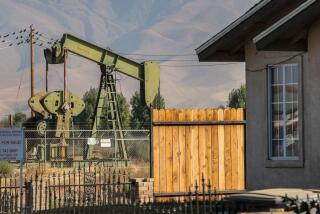Nuclear power receives its death sentence in California: Regulators vote to shut down Diablo Canyon
In a unanimous vote, state regulators agreed Thursday to a plan that will see the closing of the last nuclear energy power plant in California.
- The Diablo Canyon nuclear facility will begin shutdown operations starting in 2024.
- The power plant’s operator, Pacific Gas & Electric, says the facility will soon become an economic liability for the company because of dramatic changes in the state’s energy landscape.
- Critics of the shutdown say it will lead to the use of more natural gas in the state’s power grid.
- Environmental groups hailed the vote but want assurances that greenhouse gas emissions will not rise as a result.
Here’s the full story:
The last remaining nuclear power plant in California will begin shutting down operations in six years after state regulators Thursday unanimously approved a plan outlining details of the closure.
“We chart a new energy future by phasing out nuclear power here in California,” California Public Utilities Commission President Michael Picker said before the 5-0 vote to shut down the Diablo Canyon Nuclear Power Plant in San Luis Obispo County. “We agree the time has come.”
The decision comes after the plant’s operator, Pacific Gas & Electric, announced an agreement in 2016 with a collection of environmental and labor groups to shutter the plant that has delivered electricity since 1985.
The utility said Diablo Canyon would not be economically feasible to run because of changes in California’s power grid — specifically, the growth of renewable energy sources, increased energy-efficiency measures and the migration of more customers from traditional utilities to community choice aggregation (CCA) for their local electricity needs.
Diablo Canyon was the state’s last nuclear plant after the San Onofre plant was closed in January 2012 after a small amount of radiation leaked from newly-installed replacement steam generators.
While California will soon have no nuclear plants in operation, there are 99 nuclear reactors operating in the United States.
Under Thursday’s decision, Unit 1 will close in 2024, and Unit 2 is scheduled for retirement in 2025, the years the federal licenses for the respective units expire.
Located on a bluff overlooking the Pacific Ocean in San Luis Obispo County, Diablo Canyon generates almost 18,000 gigawatt-hours of power each year, powering 1.7 million homes.
According to the most recent figures from the California Energy Commission, nuclear power accounted for 9.18 percent of the state’s power mix, without producing greenhouse gases.
Supporters of nuclear energy said closing Diablo Canyon will cause the state to use more natural gas — a fossil fuel — in order to replace the electricity generated by the plant.
“I’m sorely disappointed the CPUC has neglected the ratepayers and the environment,” said Gene Nelson, government liaison with Californians for Green Nuclear Power. “Solar and wind cannot be counted on …They’re subject to random interruptions.”
Environmental groups hailed the decision, which was expected after 17 months of filings and debate among parties in the CPUC review, but they were also concerned about what type of energy sources will be used to replace generation from Diablo.
“We really have to make sure that as we’re phasing out and getting rid of our nuclear power we’re not replacing it with dirty and dangerous fossil fuels like natural gas and that we’re moving to a 100 percent, clean, renewable economy,” said Dan Jacobson, state director of Los Angeles-based Environment California.
Commissioners expressed confidence that won’t happen.
“There’s no retreat from our strong commitment to our GHG (greenhouse gas) reduction goals,” commissioner Cliff Rechtschaffen said.
As for which types of clean energy sources should be procured, commissioners left that up to an “Integrated Resource Plan” the CPUC has established for long-term power purchases.
Commissioners approved a proposed decision outlined by a CPUC administrative law judge that would give PG&E less money than it wanted to keep staff and retrain the plant’s 1,500 employees as Diablo Canyon gets decommissioned.
PG&E wanted $363.4 million but the commission reduced that to $222.6 million. PG&E will receive $18.6 million from ratepayers for costs associated with licensing from the Nuclear Regulatory Commission.
A number of parties in the case, as well as PG&E, proposed $85 million to compensate the community surrounding the plant for the loss of tax dollars that would accompany the closure of the facility.
But while commissioners acknowledged the plant’s economic effect on the area, they said questions involving tax dollars are the responsibility of the state Legislature to address.
“We are very disappointed that this program was not approved,” PG&E spokesman Blair Jones said, adding the utility will meet with the parties it worked with in 2016 to determine what do next.
Commissioner Liane Randolph said the decision to close Diablo Canyon would not pose a threat to reliable power in California.
The ruling “moves California away from the era of nuclear power and toward an era of zero-carbon, renewable energy,” Randolph said.
Critics of the decision to close Diablo Canyon note that greenhouse gas emissions in the state went up after the San Onofre Nuclear Generating Station went offline. In-state generation of natural gas jumped from from 45.4 percent in 2011 to 61.1 percent in 2012.
In the most recent numbers from the California Energy Commission, in-state generation of natural gas was at 49.86 percent in 2016.
Commissioner Carla Peterman said the Diablo Canyon case offers policymakers a much smoother path to avoiding an increase in fossil-fuel energy sources. While San Onofre was abruptly shut down, Diablo Canyon will not begin to close for another six years.
“We have tools available now that we didn’t have several years ago,” Peterman said.
CPUC decided in November 2014 on a plan that charged San Onofre customers $3.3 billion of the estimated $4.7 billion in costs related to the premature closing of the plant.
But it was later revealed that then-CPUC President Michael Peevey crafted the specifics of the deal in a secret meeting at a hotel in Poland with an executive with San Onofre operator Southern California Edison.
This week, it was revealed that utility executives and consumer advocates appear to have settled a long-running dispute over premature closure costs. Neither side would discuss terms and the agreement requires commission approval.
Michael Shellenberger, an advocate of nuclear energy and the president of the Berkeley-based research group Environmental Progress, said the details of what happened at San Onofre should have been resolved before the CPUC approved the closing of Diablo Canyon.
“Ratepayers are at risk of losing over $3 billion in the San Onofre ripoff,” said Shellenberger, who is running for governor of California as a third-party candidate and has pledged to reform the CPUC. “Carbon emissions will go up if they close Diablo.”
This story has been updated to add details of Thursday’s vote and quotes from Liane Randolph, Carla Peterman and Michael Shellenberger.
Business
rob.nikolewski@sduniontribune.com
(619) 293-1251 Twitter: @robnikolewski
ALSO
Will natural gas go up when Diablo goes down?
More setbacks for the nuclear power industry
More to Read
Inside the business of entertainment
The Wide Shot brings you news, analysis and insights on everything from streaming wars to production — and what it all means for the future.
You may occasionally receive promotional content from the Los Angeles Times.











